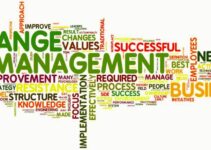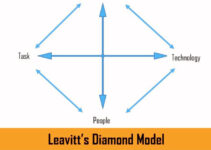Change management models consist of methodologies, theories, and concepts that offer you key insight and an in-depth guide on how you to make changes in your organization. They guide you on how to bring and implement transformational changes and processes in your organization that the public would accept. Today, we’ll discuss different change management models and; the top 15 various change models for businesses and companies.
Different Change Management Models – Top 15
Let’s discuss different change management models; some of the top 15 various change management models are as follows;
Stephen Covey Change Management Model
Stephen Covey’s book “The Seven Habits of Highly Effective People” laid the foundation of his change management model. He encourages and motivates people, team members, and employees to think and analyze how they react to changes in their lives. However, some of the 7 habits that people should utilize in their personal and professional lives are as follows;
- Being proactive and selecting your reaction to changes rather than getting involved in the mess; allows them to be aware of the trigger points, instead of focusing on negative emotions
- Starting with the endpoint in your mind
- Do the first thing first
- Developing and perceiving a win-win situation
- First, understand, then make your points clear for others to comprehend you
- Synergy and streamlining various processes to establish relationships among various parts
- Sharpen your saw and getting ready would save time and valuable resources in the long term
Kaizen Change Management Model
Kaizen is a very famous Japanese change management model and it focuses on developing continuous processes rather than doing one-time shifts. The term Kaizen means continuous improvement and it focuses on continuous development and integration like the software development process. However, the Kaizen model prefers small and regular changes rather than big and infrequent; they’re as follows;
- Not jumping to the conclusion
- Proactively getting ready and developing problem problem-solving mindset
- Rejecting the status quo
- Selecting adaptive and iterative changes over perfectionism
- Mistakes are your teachers and they lead you toward a solution
- Developing a safe environment where people could freely and openly contribute
- Finding the root cause of the problem rather than accepting the first explanation
- Collecting information, review, and comment from various sources
- Small improvements at a lower cost
- Continuously making improvements
LaMarsh Managed Change Model
The LaMarsh outlines a process-oriented strategic approach. Risk management is the central point and it guides you on how to decrease risk throughout the process. However, it allows you to recognize areas and points where the change is needed most. The five steps of the LaMarsh change model are as follows;
- Starting the change by setting goals and bringing everyone onboard
- Recognizing the risk factors relevant to changes and employee resistance
- Executing the changes by getting support from the resisting employees
- Measuring results against your goals and objectives
- The sustainable result means keep supporting your employees
John M. Fisher Change Management Model
The John M. Fisher Change management model focuses on people and how their emotions go through various stages while implementing the changes. This model is applicable to personal and professional life. However, some of the 12 stages of John M. Fisher’s change management model are as follows;
- Fear and anxiety of the unknown changes
- The happiness of the change
- Threat to reanalyze yourself relevant to changes
- Anxiety of unknown future changes
- Anger towards people who are launching changes
- Guilt of previous changes and how it caused trouble
- Disappoint to want to give up changes
- Hostility due to previous bad experience
- Accepting the changes
- Moving forward with new changes
- Denial for not accepting the changes for various reasons
- Disillusionment when changes don’t match your beliefs and values
Accelerated Implementation Methodology (AIM
The AIM model focuses on implementing changes strategically. Some of the main steps involved in the change models are as follows;
- Defining the changes
- Getting sponsorships that would impact changes
- Building capabilities and expertise of change agents by offering them training
- Establishing target readiness by dealing with the reaction of people
- Developing communication strategy
- Reinforcement strategy by focusing on the new ways of doing things
PDCA (Deming Cycle)
PDCA Deming Cycle change management model focuses on process and process improvement, rather than people. Some of the main elements of the PDCA cycle are as follows;
- Planning
- Doing
- Checking
- Acting
The model focuses on executing changes on a small scale like a team or project and getting their feedback and reviews. If everything goes as planned, then you can apply the changes at the mass scale. However, it is significant to recognize the change opportunity target the root cause of the problem; and visualize the outcome. You should implement changes after performing the primary steps and implement the changes.
Maurer 3 Levels of Resistance & Change Model
Maurer’s 3 levels of resistance and change model focuses on what has caused changes to become failures. The three levels of resistance in this change model are as follows;
I-I don’t get it
People and employees reject the idea of change when they don’t fully comprehend it. When people aren’t on board with you with the change plan, then it is likely to fail. You should provide sufficient information to the people that would help you to recognize the significance of the changes.
II-I don’t like it
While executing the changes, emotional resistance plays a key role. The reason it happens is because people are fearful of the change; they would resist change. You can move forward by expecting such types of reactions.
III-I don’t like you
If your employees don’t trust the change plan, they will resist it. If you are confident that changes are necessary changes and a successful execution process, then your team members and employees will listen to you.
Kotter’s 8-Step Theory
Kotter’s 8-step change model focuses on building comprehension about the comprehension of change, creating a checklist, and developing excitement and enthusiasm among people and employees. Some of the main steps involved in the change model are as follows;
- Developing a sense of urgency
- Setting up change team
- Establishing strategic vision
- Communicating the vision
- Avoiding change barriers
- Achieving short-term wins
- Maintaining the momentum
- Executing changes
Satir Change Model
The Satir change model focuses on analyzing the emotional changes of employees by tracking their performance. It allows you to prepare yourself for changes, but it doesn’t help you what type of changes you should expect. However, they accept the fact that people leave changes because of limited commitment, confusion, and resistance. Some of the main stages involved in the change model are as follows;
- Late status quo
- Resistance
- Chaos
- Integration
- New status quo
Bridges’ Transition Model
Bridges’ transition change management model outlines the transition of emotional reactions. The reason behind this model is when change happens to people, then they transition into the emotional stage of the journey. However, it allows you to expect frustration, anger, and denial relevant to change; you can guide people better towards a neutral zone. Some of the main stages involved in the change model are as follows;
- Letting go, losing, and ending
- Neutral zone
- A new beginning and a new start
Kubler-Ross Change Curve
Kubler-Ross Change outlines the five stages and phases of grief. When you accept the emotional reaction relevant to changes, then it allows you to be ready in all five stages. However, it is highly beneficial for small groups because it allows you to connect with employees. Some of the main steps involved in the change model are as follows;
- Denial
- Anger
- Bargaining
- Depression
- Acceptance
ADKAR Change Management Model
The emphasis of the ADKAR model is on the people behind the changes; it is a sequential and progressive process. Every letter of ADKAR outlines specific goals and objectives. However, the model encourages and supports people for the change; discuss the change plan with them before implementing it. Some of the main steps involved in the change models are as follows;
- Awareness
- Desire
- Knowledge
- Ability
- Reinforcement
Nudge Theory
The Nudge theory is dependent on the indirect suggestion and advice given by the employees based on the evidence that the changes would nudge employees. The nudge change mode is more effective and useful than enforcing and implementing the changes. Some of the main elements of change models are as follows;
- Defining changes
- Analyzing concerns of employees
- Offering evidence to exhibit the best options
- Offering change their choice
- Listening and paying heed to their feedback
- Limited options
- Integrating change with short-term win
McKinsey 7-S Model
McKinsey 7-S change model is a bit complex model to comprehend, but complications are necessary when you are implementing changes in the complex atmosphere of the organization. The design of the 7-S model is to follow the specific order rather than conducting analysis. However, it allows you to comprehend how various elements impact each other to recognize the weaknesses. The 7-S change model elements are as follows;
- Strategy
- Structure
- Systems
- Shared values
- Styles
- Staff
- Skills
Lewin’s Change Management Model
The Lewin change focuses on expanding changes over a long time to deal with resistance and changes by offering training. This model would deliver you the optimum results if you have support from the top management. However, some of the main elements involved in the change models are as follows;
- Unfreeze
- Change
- Refreeze
Conclusion: Different Change Management Models – Top 15
After an in-depth study of different change management models; we have realized that various change management models are significant for implementing changes. If you are learning about various change models; then you should keep in mind the above-mentioned top 15 list of change management models.
Ahsan is an accomplished researcher and has a deep insight in worldly life affairs. He goes Live 3 days a week on various social media platforms. Other than research writing, he’s a very interesting person.


